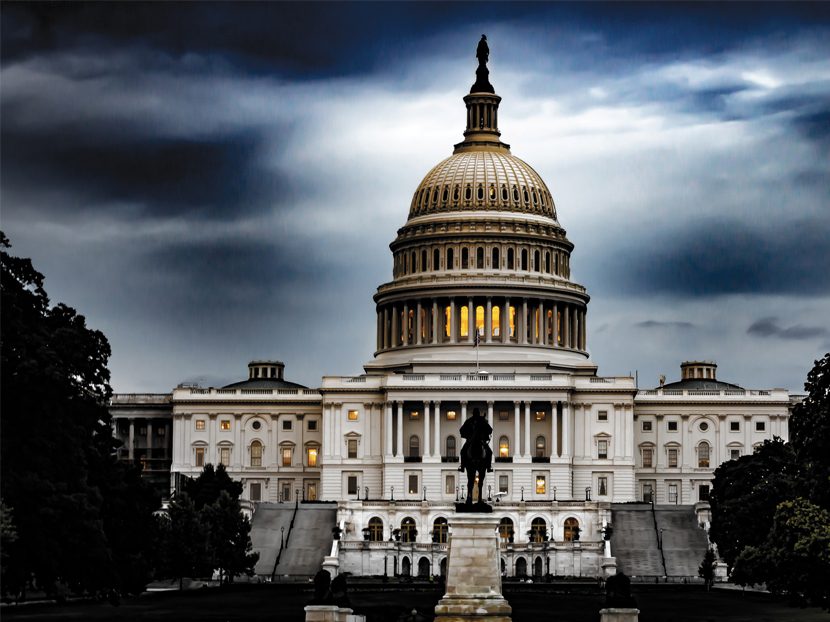Debt-Ceiling Postponement a Two-Party Disaster
This rare consensus by both parties leaves the tax-paying American public holding the bag with no one to verbalize their contempt.

While it appeared the U.S. debt ceiling, which had already surpassed the previous $20 trillion “top” by almost three trillion dollars at the end of July, would become a significant congressional confrontation, it was cast aside without a murmur.
The chicanery of this unexpected unity found itself in a rare political agreement, literally giving two-party approval to what, in past years, had become a lengthy tug-of-war.
What might be considered, by some observers, as indicating a rare two-party agreement by a Congress (House and Senate) openly displaying a hypocrisy of indifference, they are opening the door to restriction-free spending, agreed to by Democrats and Republicans, and concentrating on the 2020 presidential election.
This rare consensus by both parties leaves the tax-paying American public holding the bag with no one to verbalize their contempt. According to the Committee for a Responsible Federal Budget, this deal poses no limit to the trillions in the near future that will be spent.
This unusual two-party convenience is bound to generate liabilities. They already had shown up as the current tax cuts previously passed into law were creating deficits that had not previously existed.
According to the Federal Budget Committee, even without the latest “aside-casting” of debt-ceiling control (never practical), the projected debt ratio approaches 100 percent of the gross domestic product. Experts expect it to be reached by 2029.
When the next recession presents itself in the forthcoming future, it seems almost impossible for a two-party Congress to come forth with a combination of increased taxes (abhorred by GOP) or lower interest rates, which also will have reached rock-bottom at that time.
The pressure by President Donald Trump to bring federal interest rates down was not accepted by the Federal Reserve’s board of directors at this time. Rock bottom will likely be in existence by the foreseeable future, when the U.S. government action no longer retains its leverage, rapidly disappearing before next year’s election.
Space Penetration in the Future
While celebrating America’s planting the Stars and Stripes on the moon 50 years ago by “Space Cadet” Neil Armstrong, there is growing speculation as to what the next 50 years will bring regarding expanded opportunities.
American space development, thus far, has been focused on facilitating “space activity” for satellite communications relating to better overall systems.
So far, space development has been minimal. But now the space approach has become more focused. President Donald Trump has already indicated early initiatives to expand the limited moon landing of 1969. Even China is expected to land on the moon by 2035, while the United States is planning a multiple-personnel second landing by 2024. Costs for the Apollo program in the 1960s were in the hundreds of billions of dollars; they are now expected to be reduced to about 10 percent of that amount.
The composition of America’s second moon landing will be comprised by the private sector — unlike the first, which was primarily financed by the U.S. government, NASA and the Pentagon. Elon Musk’s rocket firm SpaceX made successful launches last year, in conjunction with Jeff Bezos, the primary owner of Amazon. This brings into play the private sector’s greater cost efficiency, which has resulted in the dramatic overall cost reduction.
At a time when the Earth faces increasing climate change criticism, focusing on much greater space exploration, free of such criticism, would seem to provide a convenient alternative. The Outer Space Treaty of 1967 declares space to be open to all “mankind,” without claims of ownership by individual nations, which might want to establish such a self-seeking privilege.
The United Nations Office for Outer Space Affairs notes that a total of 8,378 objects have been launched into space. Currently, 4,994 are still in orbit, although seven of them are in orbit around celestial bodies other than the Earth. This means nearly 5,000 satellites are whizzing around above our heads every day. Meanwhile, NASA tracks more than 500,000 individual pieces of debris, hurtling at velocities of over 27,000 kilometers an hour.
Such uncertainties magnify the dangerous risk the use of military force that could occur in space in the future.
America, China and India are rapidly increasing their destructive capabilities. All will eventually be able to use military satellites with lasers if a confrontation occurs anytime in the foreseeable future. President Trump is already working on setting up a Space Force. It would be the first new branch of the armed forces since the Air Force was created in 1947. Not to be outdone, President Emmanuel Macron of France also is amassing a new Space Command.





